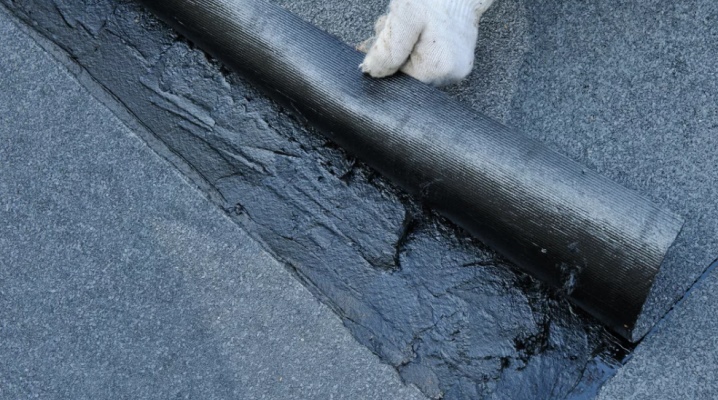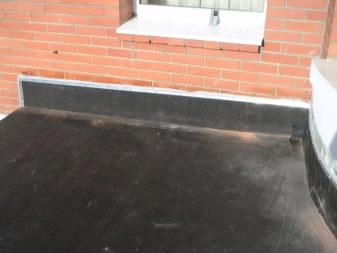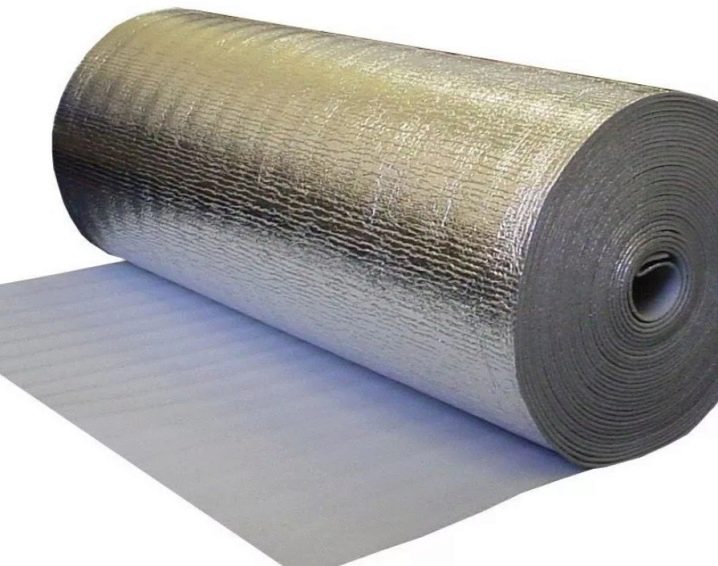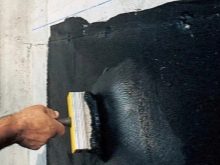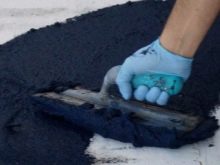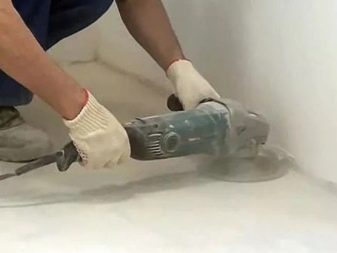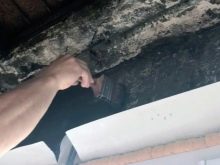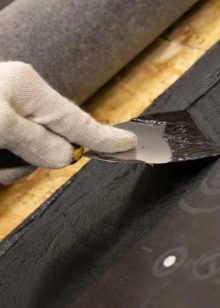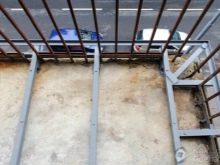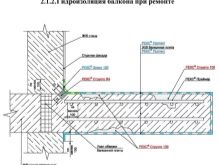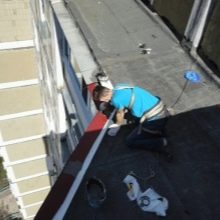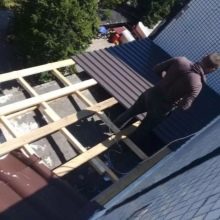Balcony and loggia waterproofing
One of the main steps of any repair is considered to be waterproofing a loggia or balcony. If this is not done, then snow, rainwater and hail run the risk of becoming a serious disaster: water will flow inward, spoil the insulation material and finish, lead to corrosion of steel parts and contribute to the appearance of pathogenic microflora. That is why you should take care in advance to protect the additional space from excess moisture. We will tell you how to do this in our article.
Choice of materials
To begin with, let's briefly dwell on why it is so important to waterproof a balcony or loggia in cottages and city apartments. If you do not pay attention to this stage of repair and finishing work, then very soon you may not only lose the expensive space cladding, but also face the problem of leaks inside residential premises. Here are some of the negative consequences that the owners of loggias and balconies without high-quality waterproofing will experience:
- loss of finishing materials that were used for the construction of an additional room;
- corrosion of the reinforcement of balcony ceilings and metal structures of the loggia;
- the reproduction of fungi, mold and other pathogenic microflora (this is especially unpleasant if the structure is wooden.
Finally, the worst case scenario is the loss of the integrity and strength of the supporting structures of the additional space. Under the influence of constant moisture, they quickly rust and begin to rot. Over time, the damage is aggravated so much that the operation of such a structure becomes potentially unsafe for humans. Waterproofing the loggia is especially important if mineral wool was used for insulation. Upon contact with moisture, its technical parameters deteriorate significantly, therefore the layer of heat-insulating material should be carefully protected from any penetration of moisture from the outside.
There are two types of waterproofing materials: coating and roll. Each of them has its own pros and cons. So, standard roll coatings are considered more reliable and durable in comparison with coating ones. But the latter are easier to install, so every homeowner with minimal construction and finishing skills can cope with waterproofing. Let's take a closer look at each of these categories.
Roll hydraulic materials
The most common representative of this group of waterproofing materials is roofing material. It is a durable cardboard impregnated with special formulations based on petroleum products. Lay it using a gas burner. For a long time, roofing material did not know competitors. However, modern industry offers many other materials to create an effective protection against rain moisture.
- Foam foil (folgoizolone). This is a common porous film with a durable metallized coating. This waterproofing material is durable, it repels water and reflects UV rays. In addition, it maintains high thermal insulation, so when using it, there is no need for subsequent insulation of the floor and walls. It is enough just to process the joints with polyurethane foam.
- Isol. Such material resembles roofing material. In its structure, it is also a roofing board treated with bitumen. Its difference lies in the presence of fillers: rubber, fungicide and polymer additives. This combination provides the most efficient vapor barrier.
- Glass insulation. Unlike all other roll materials, glass insulation is made on the basis of fiberglass. As a binder, a compound of bitumen with multicomponent admixtures is used here. The material is coated on top with a polymer film, it can be one- or two-sided.
- Roofing paper. Roofing board treated with tar-based products and sprinkled with fine mineral chips. This is a relatively easy to install and budget method for waterproofing a balcony.
- Glass roofing material. Unlike standard roofing material, in the manufacture of the described material, bitumen is applied not to a paper base, but to thin glass.
Lubricating materials
Lubricating waterproofing materials are considered universal, they are extremely easy to install. They can be applied with the simplest roller or brush. Usually, such mixtures consist of several types of sealants (cement, polymer, bituminous mastics), as well as different types of fillers (latex or rubber crumb). The use of such compositions simplifies the work and reduces the time allotted for the interior decoration of additional spaces. The advantages of such coatings include resistance to moisture and external mechanical damage.
Preparation
The durability of waterproofing on balconies directly depends on the characteristics of the selected material. But no less the final result is influenced by the preparation for the repair work. If you plan to do waterproofing of additional space with your own hands, then first you should thoroughly clean the surface to be treated from all kinds of contaminants: remnants of the previous finish, dust particles, grease and dirt.
The best effect is obtained by using an industrial vacuum cleaner, as well as a stiff metal brush. After cleaning, the surfaces to be treated are coated with a primer, primer. It is very important to carefully process all hard-to-reach areas, seams and crevices. It is advisable to get a thin brush for this.
It should be borne in mind that the surface must be perfectly flat. The maximum allowable height difference can be 2 mm.
Stages of work from the inside
When the base is prepared, you can go directly to the waterproofing of the balcony. To do this, you need to process the floor, ceiling, as well as walls. The step-by-step instructions include simple but extremely important work.
Ceiling
When waterproofing the ceiling surface, the greatest effect is given by the use of penetrating compounds. In this case, you need to perform the following types of work.
- At the first stage, the surface to be treated is thoroughly cleaned. All areas of leaks are carefully treated with high-quality polyurethane sealants.
- A thin layer of penetrating waterproofing material is applied to a pre-moistened or primed surface.
- After drying, polystyrene foam panels are fixed on the waterproofing. They are planted with steel fungi.
- When carrying out work on the last floors, the roof is additionally sealed.
If you plan to insulate the ceiling of the loggia, then it should be borne in mind that its ceiling is nothing more than a concrete slab of the next floor. Therefore, here it is necessary to set the slope from the wall of the house towards the outer wall of the additional room. If there is already a bias, then you need to act as follows:
- first, a vapor barrier material is attached;
- then a layer of heat-insulating material is applied (if necessary);
- then a cement screed is performed;
- after final shrinkage (usually it takes at least three weeks), 2-4 layers of a mixture of bitumen are applied on top;
- then you can proceed to laying the first layer of rolled waterproofing (traditionally foil, isolon or roofing material are used);
- at the final stage, the edges of the roof are closed with a glue strip, it is fixed on self-tapping screws, and all joints and seams are certainly treated with a sealant.
Walls and partitions
Special attention should be paid to wall insulation. When carrying out this type of work, preference should be given to roll materials: in this case, you can create hydro and thermal insulation in one step, significantly saving money and time. But if you still want to play it safe, then it is recommended to apply a couple of layers of high-quality mastic on top of the roll material.
The work is not particularly difficult:
- roofing felt or a similar coating is fused using a burner, or glued to the wall;
- by all means treat all joints with a sealant;
- after that, mastic is applied, and then decorative cladding is performed.
We pay special attention to the fact that it is unacceptable to install roll waterproofing on balconies in several layers. It is believed that this can enhance the result. But this is a completely dangerous delusion: such a decision will only worsen the situation.
If water accidentally gets into the space between the layers, then it will not be able to come out and dry. As a result, moisture will accumulate inside, leading to the multiplication of pathogenic microflora, mold and fungi, which gradually move to the inner surface of the loggia.
Floor
A variety of techniques and tools are used to waterproof the floor in additional spaces. Depending on the materials used, the method of their application also changes. The simplest technology is the hot method. It includes several sequential steps.
- The surface of the slab is carefully cleaned, covered with plaster and dried. The base is primed with liquid concrete.
- Formwork is mounted around the entire perimeter of the balcony. Its height is 30-35 cm. For maximum strength, a metal mesh is laid.
- Heated mastic is poured into the prepared formwork. In this case, it is extremely important that the layer is evenly distributed over the entire surface.
- When the mastic dries up, another layer of material is applied.
"Cold" equipment is no less in demand. As the name suggests, it involves the use of cold mastic. This option has become widespread due to availability, durability and simplicity.
However, it is undesirable to use it on open balconies, and at subzero winter temperatures, this method is completely technologically impossible.
The installation process involves the following work:
- the surface is cleaned, any defects in the base are removed;
- concrete is degreased and primed;
- after the soil has dried, coating waterproofing materials are applied.
In closed areas, the plastering technique is in demand. This is a fairly simple and affordable method for installation, which involves the use of cheap mixtures based on polymers or cement. Its advantage is its versatility, since such waterproofing can be used on all types of surfaces. To carry out finishing work, you need to follow these steps.
- The surface of the slab is cleaned, covered with putty, and then primed.
- After the soil has dried, the bottom layer of the plaster is carefully applied. It is important to distribute it evenly over the entire surface.
- After 30-40 minutes, the second layer is laid. Further work is repeated. You cannot make more than 4 layers.
- This coating must dry thoroughly. Drying will take only a few days in warm summer weather. In this case, from time to time, the coating must be moistened, otherwise the surface will dry out and begin to crack.
- After drying, OSB panels are laid on the waterproofing, and on them - any finishing coating (laminate, tile or linoleum).
If all actions are carried out in compliance with the technology, then the device of the correct complex waterproofing of the balcony can provide effective protection from water and all troubles associated with external exposure to liquid.
Outside waterproofing tips
It is important to understand that not all waterproofing work can be done by hand.Without specialized skills, it is very dangerous to waterproof a balcony or loggia outside. The best solution would be to turn to the services of industrial climbers. When working on the upper floors, it is very important to pay attention to the waterproofing of the roof. In general, the sequence of actions includes the following steps.
- All embroidered external tile joints are sealed with cement mortar with the addition of water-repellent impurities.
- Large cracks are additionally sealed with a special sealant for concrete structures, and on top they are coated with concrete mortar.
- After the mortar dries, the seam is covered with a hydro-repellent impregnation. Next, roll or cast waterproofing is applied to the roof surface. The use of a coating material on external surfaces is considered impractical due to its high cost.
Usually, balconies and loggias are waterproofed under corrugated board.
